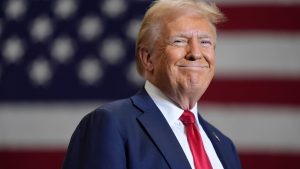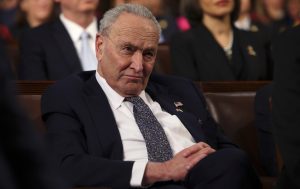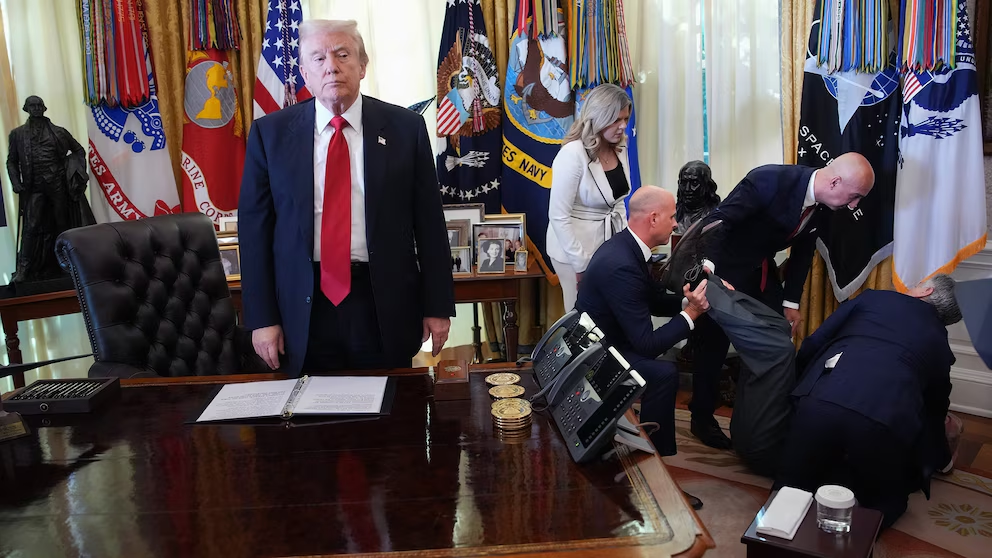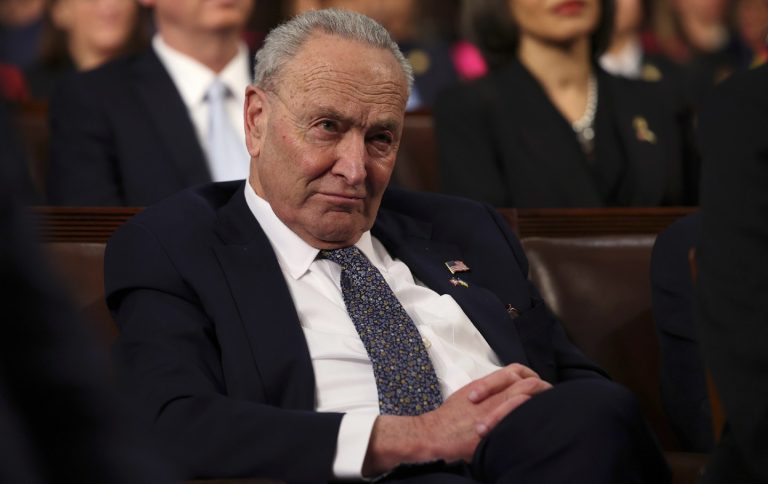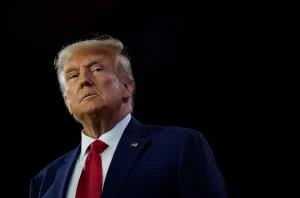A bizarre moment during a White House press conference on Thursday (November 6) has taken over social media after a man fainted just a few feet away from President Donald Trump — and the president’s reaction, or lack thereof, has sparked an avalanche of commentary online.
The event, held in the East Room of the White House, was meant to celebrate a major agreement between the Biden administration’s successor and pharmaceutical giants Eli Lilly and Novo Nordisk — makers of the immensely popular weight-loss drugs Zepbound and Wegovy. These medications, hailed by many as breakthroughs in combating obesity, have been widely adopted in recent years. But their steep costs, sometimes running hundreds or even thousands of dollars per month, have made them inaccessible to many Americans.
To address this, President Trump announced that his administration had negotiated a deal to reduce the cost of these drugs through the government’s Medicare and Medicaid programs. According to Trump, the agreement would bring monthly costs down to between $149 and $350 — a significant cut from previous retail prices.
“This is a tremendous deal for millions of Americans struggling with obesity,” Trump said from the podium. “We’re making sure these life-changing drugs are affordable for everyone who needs them. It’s a big win for American health care.”
But just as Trump was wrapping up his remarks and thanking representatives from the two pharmaceutical companies, the atmosphere in the room abruptly shifted.
As reporters looked on, one of the attendees — reportedly a representative of one of the drug manufacturers — collapsed suddenly near the front row. Witnesses say a thud echoed across the room, drawing startled gasps from journalists and White House staff.
According to multiple attendees, Dr. Mehmet Oz, the television personality and physician who was also present, immediately rushed toward the man to offer assistance. Several other staff members knelt beside him to check his pulse and ensure his airway was clear.
But what really caught public attention wasn’t the collapse itself — it was how Trump responded.
Photos and video clips show the president briefly glancing toward the fallen man, then turning his gaze back toward the crowd and standing motionless as the commotion unfolded. The contrast between the urgency of those helping and Trump’s composed, almost indifferent demeanor quickly became the focal point of online discussions.
“Trump briefly turned to the fallen man before turning away and looking forward to the audience,” reported Getty Images photographer Andrew Caballero-Reynolds, whose photo of the scene has since gone viral.
The man was soon helped to the ground and laid flat while Dr. Oz and others checked his condition. Within moments, White House medical staff arrived with equipment. The man was eventually escorted out of the room on his feet, seemingly stable.
White House Press Secretary Karoline Leavitt later told reporters that the man was a guest of one of the healthcare companies in attendance and confirmed that he had been treated by the on-site medical team.
“During the Most Favored Nations Oval Office Announcement, a representative with one of the companies fainted,” Leavitt said in a statement. “The White House Medical Unit quickly jumped into action, and the gentleman is okay. The press conference will resume shortly.”
Despite the reassurance that the man had recovered, the internet had already seized upon Trump’s frozen reaction.
A particularly striking image of the scene — showing Trump facing forward with an impassive expression as people tended to the man on the floor — spread rapidly across X (formerly Twitter), Reddit, and Instagram.
The memes and commentary came fast.
One Reddit user quipped, “Just replace the guy on the floor with America and we have the perfect painting for 2025.”
Another joked: “Trump isn’t scripted for dynamic events. It’s like an NPC glitch — you have to reload the save.”
Others took a more critical tone. One widely shared post read: “This photo perfectly encapsulates the Trump administration in 2025. Everyone else helping someone in distress, while Trump looks annoyed it’s not about him.”
The image, captured by Getty photographer Andrew Harnik, has already inspired dozens of remixes and captions. Some edited the scene into Renaissance-style paintings, while others added satirical dialogue bubbles.
But supporters of Trump were quick to defend him, arguing that the president simply allowed trained personnel to do their job.
“He’s the president, not a paramedic,” one commenter wrote on X. “He stayed calm, which is what a leader should do in an emergency.”
Another user added: “Imagine the headlines if he ran over and got in the way. People would say he was making it about himself. He can’t win.”
For Trump’s team, the focus of the day remained the pharmaceutical deal — a policy win they hope will resonate with working- and middle-class Americans frustrated by high medical costs.
The agreement comes amid skyrocketing demand for drugs like Wegovy and Zepbound, which use compounds similar to semaglutide and tirzepatide to suppress appetite and promote rapid fat loss. Though initially intended for patients with obesity or diabetes, they’ve gained enormous popularity among celebrities, influencers, and everyday Americans seeking quick results.
Yet their costs — often between $900 and $1,400 per month without insurance — have sparked backlash. Trump’s team framed Thursday’s announcement as a key step toward making such treatments “accessible to everyone, not just the rich.”
In his remarks, Trump highlighted the importance of addressing the obesity epidemic, calling it “one of the biggest health challenges in America today.” He also took a brief jab at past administrations, saying: “We’re fixing what others ignored for years — people’s health shouldn’t depend on how much money they have.”
The fainting incident momentarily disrupted that message, but the White House resumed the press conference about ten minutes later once the man was confirmed to be stable.
Leavitt returned to the podium and thanked those who helped, saying the medical team responded “with incredible professionalism.” She reiterated that the event would continue as planned.
However, by the time the conference resumed, social media was already flooded with posts dissecting the president’s body language and speculating about what was going through his mind at the time.
Clips from multiple angles showed Trump standing with his hands clasped in front of him, expressionless, as aides gathered around the collapsed man. Some users noted that he appeared to mutter something briefly to an aide, though it was unclear what was said.
“Say what you want about Trump, but this is a surreal photo,” one user commented under a widely shared image on X. “You could hang it in a museum as political commentary.”
The viral moment has since overshadowed the policy announcement itself, drawing parallels to past instances where Trump’s gestures, facial expressions, or reactions dominated the conversation more than the substance of the event.
Critics argue that the president’s unbothered stance reflected a lack of empathy — a common refrain among his detractors. Supporters, however, countered that staying calm during a sudden medical emergency was the appropriate and presidential response.
Regardless of interpretation, the moment underscored how every second of Trump’s public appearances is scrutinized and memeified in real time. In today’s media landscape, one still image can eclipse entire policy discussions.
By Friday morning, hashtags like #TrumpReaction, #WhiteHouseEvent, and #ZepboundDeal were trending across major platforms, each carrying its own wave of commentary, humor, and outrage.
Meanwhile, health officials confirmed that the fainting incident was “likely caused by dehydration” and that the man had been evaluated and cleared to return home later that evening.
As the photo continues to circulate, the White House appears eager to redirect public focus back to the administration’s health care initiative. A statement released Friday morning emphasized that the new pricing deal “marks the largest single reduction in obesity drug costs in U.S. history.”
Still, for many onlookers, the defining image of the day remains the same — President Trump standing stoically at the podium, gazing ahead, as chaos unfolds beside him.
Whether seen as composure or coldness, the moment captured something unmistakably symbolic — a presidency where even a split second of stillness becomes a viral flashpoint.

Emily Johnson is a critically acclaimed essayist and novelist known for her thought-provoking works centered on feminism, women’s rights, and modern relationships. Born and raised in Portland, Oregon, Emily grew up with a deep love of books, often spending her afternoons at her local library. She went on to study literature and gender studies at UCLA, where she became deeply involved in activism and began publishing essays in campus journals. Her debut essay collection, Voices Unbound, struck a chord with readers nationwide for its fearless exploration of gender dynamics, identity, and the challenges faced by women in contemporary society. Emily later transitioned into fiction, writing novels that balance compelling storytelling with social commentary. Her protagonists are often strong, multidimensional women navigating love, ambition, and the struggles of everyday life, making her a favorite among readers who crave authentic, relatable narratives. Critics praise her ability to merge personal intimacy with universal themes. Off the page, Emily is an advocate for women in publishing, leading workshops that encourage young female writers to embrace their voices. She lives in Seattle with her partner and two rescue cats, where she continues to write, teach, and inspire a new generation of storytellers.


